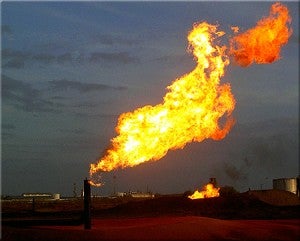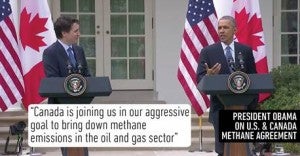 When the White House confirmed plans to limit methane pollution from the oil and gas sector — not just from new or heavily modified facilities, but thousands of existing wells, pipelines and other facilities that are currently emitting at least 9.3 million metric tons of the invisible heat-trapping gas each year — industry responded with the usual complaints about back-breaking costs.
When the White House confirmed plans to limit methane pollution from the oil and gas sector — not just from new or heavily modified facilities, but thousands of existing wells, pipelines and other facilities that are currently emitting at least 9.3 million metric tons of the invisible heat-trapping gas each year — industry responded with the usual complaints about back-breaking costs.
Unlike recent years, those objections come with a twist: The widespread (and very real) challenges in an oil and gas sector struggling with a global supply glut and sharply lower prices, both enabled by the same unconventional production technologies that fueled the boom in the first place. We simply shouldn’t impose new regulations in a down market, the industry says.
To be clear: There’s no disputing these are tough times for oil and gas. Hard working Americans have lost good jobs by the tens of thousands. Communities are suffering. It’s a cycle familiar to anyone who’s been around the industry, even if that doesn’t make it any easier on people living through it now. Read More














 After more than four months of spewing potent methane pollution, the massive
After more than four months of spewing potent methane pollution, the massive